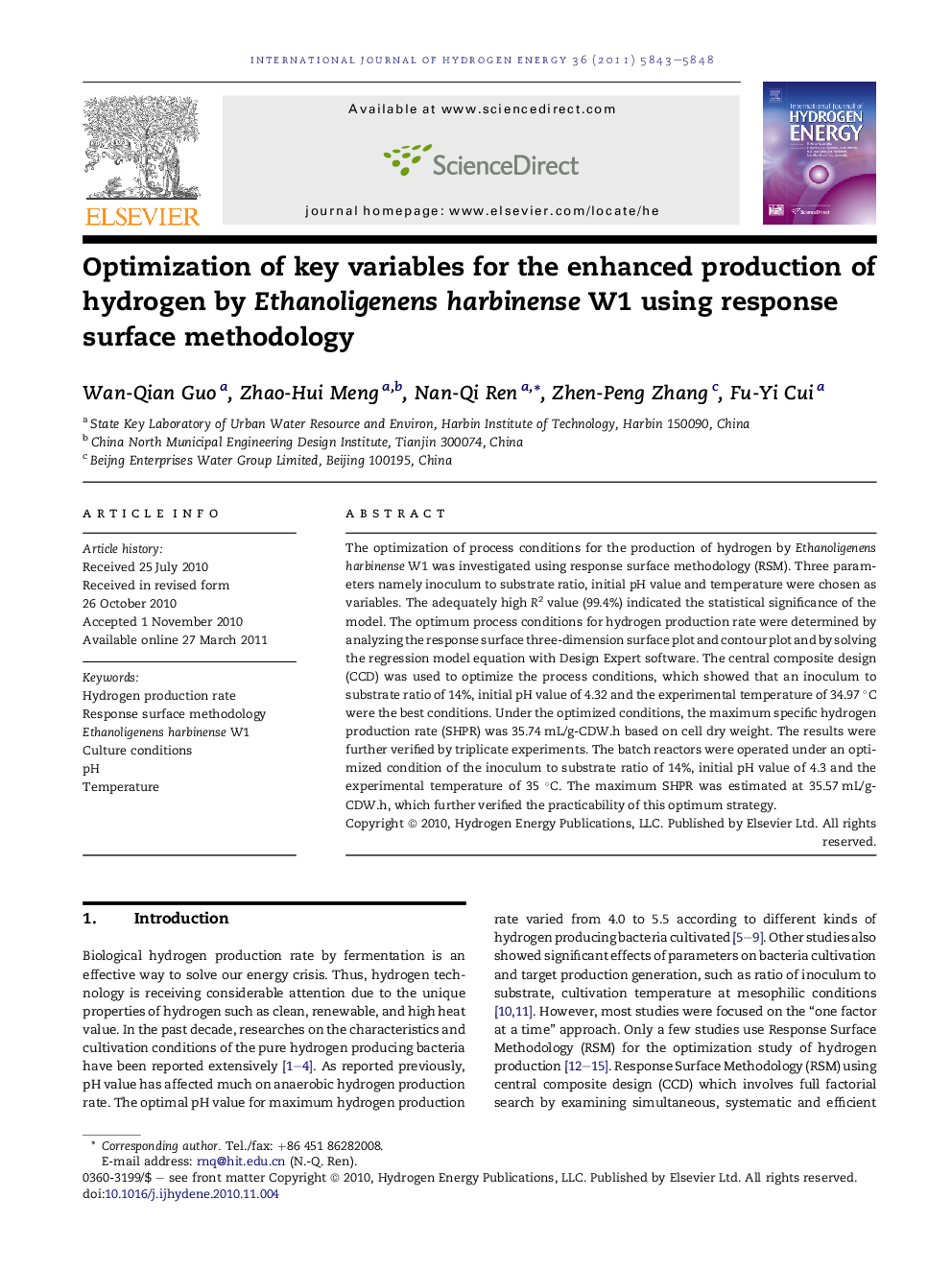| Article ID | Journal | Published Year | Pages | File Type |
|---|---|---|---|---|
| 1279513 | International Journal of Hydrogen Energy | 2011 | 6 Pages |
The optimization of process conditions for the production of hydrogen by Ethanoligenens harbinense W1 was investigated using response surface methodology (RSM). Three parameters namely inoculum to substrate ratio, initial pH value and temperature were chosen as variables. The adequately high R2 value (99.4%) indicated the statistical significance of the model. The optimum process conditions for hydrogen production rate were determined by analyzing the response surface three-dimension surface plot and contour plot and by solving the regression model equation with Design Expert software. The central composite design (CCD) was used to optimize the process conditions, which showed that an inoculum to substrate ratio of 14%, initial pH value of 4.32 and the experimental temperature of 34.97 °C were the best conditions. Under the optimized conditions, the maximum specific hydrogen production rate (SHPR) was 35.74 mL/g-CDW.h based on cell dry weight. The results were further verified by triplicate experiments. The batch reactors were operated under an optimized condition of the inoculum to substrate ratio of 14%, initial pH value of 4.3 and the experimental temperature of 35 °C. The maximum SHPR was estimated at 35.57 mL/g-CDW.h, which further verified the practicability of this optimum strategy.
► First time to study the mutual effects of pH value, ratio of inoculum to substrate, cultivation temperature on anaerobic hydrogen production of ethanol type using RSM. ► Providing more information on cultivation of Ethanoligenens harbinense W1. The optimized condition of the inoculum to substrate ratio of 14%, initial pH value of 4.3 and the experimental temperature of 35 °C. ► Suggestion of more consideration of mixed culture hydrogen production and complex substrate hydrogen production using RSM.
